This state is better known for destinations than the journeys between them. Big interstates. A long border. Lots of marquee attractions mapped out and well trodden. But there are gems to discover too. Hidden between tourist traps is some of the best riding and most spectacular scenery in the country.
Our trip is a hunt for roadside hotels and red rocks and sweeping bends, all with whatever we can fit in a backpack. A mid-week, blow-off-work, pack-a-bag-and-go kinda adventure. Writer and friend Abhi Eswarappa is quick to volunteer. We’ve known each other for years but have never ridden together. Still, he’s willing and available and has an indefatigable sense of humor that’ll stand up to long days on the road.
From the beginning, the clouds have it in for us. Thunderstorms ring Scottsdale, dark and sometimes sparked purple by threads of lightning. And from the beginning, we prod at them, comparing road maps with curtains of distant rain. You probably know the feeling, equal parts optimism and inevitability. And you probably wound up soaked to the skin too.
Highway 87 accomplishes the rare feat of being as beautiful as it is efficient. It departs Tempe heading east. Scottsdale sneaks in one last gasp at sprawl then the road breaks free of civilization and starts climbing into the Tonto National Forest. It's a broad two-lane with long bends, perfectly suited to a Harley-Davidson's long stride. The highway climbs elegantly into the forest, through the saguaro, and ever deeper into mountains and clouds. It's not long before we plunge into the thick smell of desert rain.
In a model lineup ripe with excellent baggers, the Softail Slim and CVO Pro Street Breakout are comparatively spartan standouts. The rust-red Softail is pure Americana. It's the Harley that sportbike riders envision: low, simple, puritanical. With its floorboards and semi-gloss-black detailing, passersby wonder aloud how old it is. By contrast, the Breakout represents what Harley actually is.
Bass-boat metal flakes make the paint sparkle in the sun. An air cleaner acts as a wedge, pushing your right knee into the wind. A massive 240mm-wide rear tire fills every inch of fender. The Breakout is an image-conscious machine with layer after layer of surprising competence and modernity backing it up. There’s cruise control, ABS, flawless fuel injection, and, for all the rebellious attitude, a $200 option will make the Breakout emissions legal in California. Much as it might look custom, this V-twin is factory engineered to the hilt.
They’re a curious pair, each representing the extreme ends of Harley’s core competence. For a loop that will take us through the best of Arizona, they’re perfect.
It isn’t rain but hail—nasty little pellets that plink off our helmets and bikes and sting our shins through our jeans. The pinpricks make us feel alive. There’s something joyous about riding into a storm in denim and getting away with it, the precipitation not sticking long enough to soak through, just like the ice bouncing off big cactus. The desert sucks up moisture so fast the road seems steamy rather than wet or dry.
You haven’t lived until you’ve smelled rain in the desert. Jeanette Jurado, a park ranger and botanist, credits the ubiquitous creosote bush. Resins that protect the tough little plants from moisture loss become aromatic when wet. Just breathing on the leaves is enough for them to give up their fragrance. But the smell of desert rain touches something deeper. It’s the smell of life being sustained, and it’s intoxicating. All that fresh air stuffed up your helmet and into your nose is almost narcotic.
By the time we hit Payson, we are hungry and stiff from the cold, and the clouds are only getting darker. A few long trains of touring bikes pass us, fog lamps casting glare off the wet road, riders decked head to toe in rain gear. We’re wearing Kevlar-reinforced denim and leather. Minimalism takes one on the chin.
We stop at a café and order coffee. Or I do. Abhi, somehow, doesn’t drink coffee. So I order him hot chocolate. It does little for our hard-assed image but worlds for hands that have been frozen into claw shapes around handlebars. Locals wander in from the north, drenched. We’re going north.
I’d already dragged Abhi into a hailstorm, in the desert, on a work day. Somehow, morale holds together. A good riding partner is worth his or her weight in gold.
Our hotel is booked in Sedona—two hours and a mountain range away—and the weather radar indicates a grind. We spread the atlas across the countertop. Abhi pokes his finger at a state park in the middle of the map and asks if I’ve been there. It sits conveniently below the dark greens and yellows of a thunderstorm. I haven’t been, but I’m sure it’ll do nicely.
The park rangers at Tonto Natural Bridge are astonished to see us walk in all bedraggled and wet. "You picked the one rainy day," one of them tells us. I've just come close to wiping out the $26,000 Breakout on an impossibly slick cattle grate. My boots squelch when I walk. It's not a thing we wanted to hear. We start hiking and don't even bother to take off our helmets and gear, preferring the comfort of dry-ish hair to a hike that's both strenuous and soggy.
But by the time we get to the foot of Tonto Natural Bridge, we’ve dispensed with everything but awe. In the rain, it’s a miracle of a place. It’s the largest travertine bridge in the world, with waterfalls cascading off its sides while a stream runs straight through its middle. Rainwater filters through the limestone and falls as jelly-bean-sized drops, splashing into pools or off rocks. The drops fall so slowly you can see them wiggle in the air and catch them individually in your hand.
Thunder rattles the canyon. Our gear dries on stones. Despite the clouds, colors are brighter. Wet lichen is rich with reds and greens. With the rain, there’s not another soul in sight. The cold and slick roads are worth the trouble. Cocooned in the climate-controlled bubble of a car we would never have found this place. Our onboard navigation would have routed us right on by, and without frozen hands and wet boots we’d have never stopped.
The rain tapers off and we make a run for it. A straight shot to Sedona for sunset. We punch our way through the clouds. The mountains and storm let us go all at once, and we find ourselves descending out of the pine forests into a grassy plain and sun. It’s not long before the first of Sedona’s red rocks pierce the horizon, and by the time we hit town, everything but our boots has dried.
The sun sets. We’ve traveled 200 miles. We’ve seen mist rising through forests, witnessed hail in the desert, and basked in the warm glow of red rock canyons. We’ve met a dozen people along the way, and our motorcycles have been reliable transportation, conversational ice-breakers, and eager playmates all along. And that’s just a day.
Harley-Davidson calls anybody who isn’t a white American male over the age of 35 an “outreach demographic.” That includes my friend, Abhi, the people of Asia, South America, and Europe, and every woman in the world. Why did it take us so long to figure out that motorcycling was an experience for everyone? Why do we have to call the vast majority of the world “outreach customers” for one of America’s most iconic products? Why are we so damn bad at spreading the word about how wonderful riding can be?
Sedona seems impossible in the morning. It bustles, caffeinated and merry. Tourism Jeeps and schlock T-shirt shops lure sunburned tourists with the promise of memories. And all around are staggering views. We find a coffee shop on the way out of town, and basking in civility, we eat like kings.
Sedona’s appeal is strong. We stop for photos on the way out of town then play like idiots on the Highway 89A hairpins. Abhi makes an art of long, gentle scrapes of the Softail’s footboards. I do my best to not grind away the soap-bar-shaped pegs on the Breakout. The bikes are showing their temperament now. Arizona is thick with highways that have long sweepers and gentle cambers. On a sportbike, you would want tighter bends and a more aggressive riding position. On the Softail, you want a taller seat. On Harley’s big 110, you want for nothing at all. Somebody at Harley spends a lot of time thinking about backsides.
We stop in at Slide Rock State Park to dip our feet in the icy water and Abhi chases an ice cream sandwich with a scorpion lollipop. We’ve killed so much time in the canyons that we’ll have to move quickly to make Peach Springs by dark. The road has other ideas. A construction project has the road torn down to a barely leveled bed. Truck traffic has made waves out of the dirt, and the giant rear end of the Breakout balks over the bumps. My vision doesn’t return to normal until Flagstaff.
We make Interstate 40 and haul ass, racing the sun. Circumstances spit us continually onto old Route 66. A loose visor screw. Hunger. We roll through Williams, where you can still take a train to the Grand Canyon. It’s long roads and romanticized all-American mid-century idealism. Our hotel just outside of Peach Springs is a well-kept relic, complete with rusted-out American hulks and a faded yellow sign. The Wi-Fi is spotty, and there’s no mobile service. The main attraction at the Caverns Inn—spectacular natural dry caves that were once a fallout shelter—has already closed up shop. It’s as close to the 1960s as you’ll ever see. Without our phones to entertain us, we take a late motorcycle ride, dodge swooping bats, and catch a spectacular moonrise. The next day we’ll have to make up for our languid pace.
Three-hundred-plus miles. That’s the toll our plodding is scheduled to extract. Our course through the mountains has placed us in the plains, and we’ve got a long downhill slog between us and Scottsdale. But there’s one more detour before we give ourselves over to Highway 93, cruise control, and the blur of beige desert.
Oatman is an old gold-mining town on Route 66. One more dried-up place in the Wile E. Coyote desert. I love it. The road into town from the east is daunting. It climbs a thorny hillside, pitches over a pass, and descends wildly toward the valley floor. The view over the edge changes dramatically around every bend. Mining debris. Old tunnels. Cars that have plunged off the edge and left to decay. We stop for photos at a beautifully restored old gas station and have a cold drink, knowing more are waiting just over the hill. Both bikes lose a little more peg. We hit town, and the local gang of wild burros inspects the bikes then wanders off to pick the pockets of tourists. One nabs a box of chocolates and consumes a fridge magnet in the process. Later, a lethargically staged Old West gunfight breaks out in the street.
Helmets, jackets, sunglasses, socks, sunscreen, a credit card, riding jeans, boots, long underwear, backpacks, and a map. That’s most of it. Everything needed to be an evangelist for motorcycles you can dig out of your closet in half an hour.
It’s hard to remember the allure of the open road and that it’s so accessible. Forget stalling until you find the perfect tank bag. Don’t wait for your one big trip every year. Find a friend, take what you’ve got, and just go. Will you be miserable sometimes? Will your spine scream at another hour with your knees too high and your hips too low? Will you curse at the weather? You won’t know until you go.
And you can tell every new motorcyclist you meet that you were happy you did.










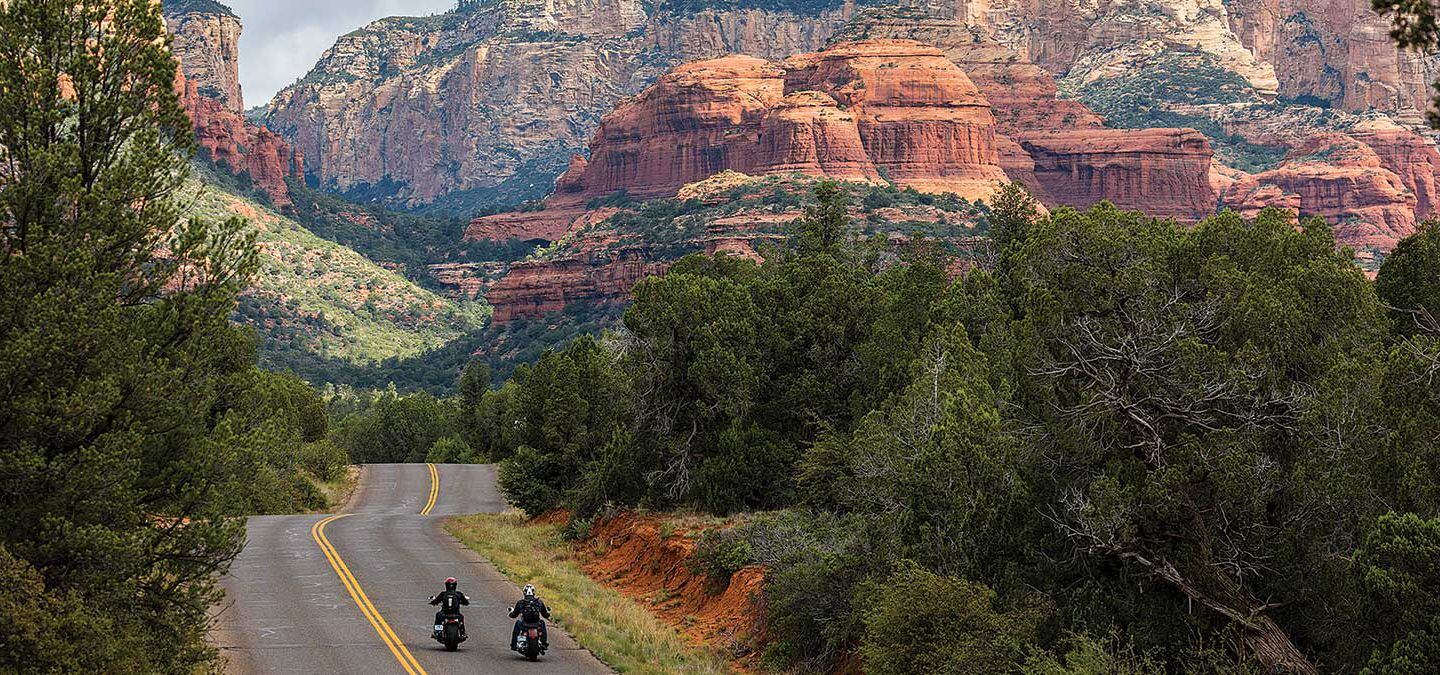

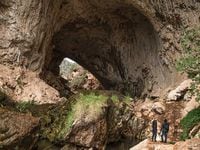


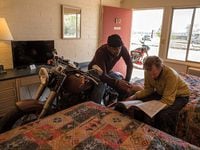
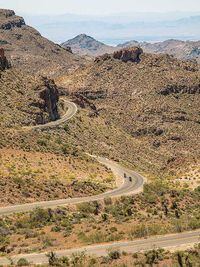

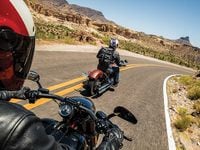
/cloudfront-us-east-1.images.arcpublishing.com/octane/S35YGSEMEZB4BLTDJTSZPF4GLA.jpg)
/cloudfront-us-east-1.images.arcpublishing.com/octane/5UOT6HPX2JFMRJAX6EH45AR4MQ.jpg)
/cloudfront-us-east-1.images.arcpublishing.com/octane/OKWOJWAKP5EP3OACCRRWPCIX2Q.jpg)
/cloudfront-us-east-1.images.arcpublishing.com/octane/2WF3SCE3NFBQXLDNJM7KMXA45E.jpg)
/cloudfront-us-east-1.images.arcpublishing.com/octane/G4MG6OUCJNBSHIS2MVVOTPX65E.jpg)
/cloudfront-us-east-1.images.arcpublishing.com/octane/IIGGWFOTOJGB7DB6DGBXCCMTDY.jpg)
/cloudfront-us-east-1.images.arcpublishing.com/octane/QSTCM6AVEZA5JJBUXNIQ3DSOF4.jpg)
/cloudfront-us-east-1.images.arcpublishing.com/octane/U4I7G625B5DMLF2DVIJDFZVV6M.jpg)
/cloudfront-us-east-1.images.arcpublishing.com/octane/B6XD6LS6IVCQPIU6HXDJSM3FHY.jpg)
/cloudfront-us-east-1.images.arcpublishing.com/octane/ICL63FEDDRDTTMINYICCEYGMDA.jpg)
/cloudfront-us-east-1.images.arcpublishing.com/octane/FCGZHQXRBZFLBAPC5SDIQLVF4I.jpg)
/cloudfront-us-east-1.images.arcpublishing.com/octane/WNOB6LDOIFFHJKPSVIWDYUGOPM.jpg)

/cloudfront-us-east-1.images.arcpublishing.com/octane/X33NU3E525ECRHXLNUJN2FTRKI.jpg)
/cloudfront-us-east-1.images.arcpublishing.com/octane/6KKT5NNL2JAVBOXMZYS5ZO76YA.jpg)
/cloudfront-us-east-1.images.arcpublishing.com/octane/J5RKG5O455GMPGQRF2OG6LRT7A.jpg)
/cloudfront-us-east-1.images.arcpublishing.com/octane/GX2CIZKQVRH2TATDM26KFG2DAE.jpg)
/cloudfront-us-east-1.images.arcpublishing.com/octane/ZWIDYSAKQZHD5BHREMQILXJCGM.jpg)
/cloudfront-us-east-1.images.arcpublishing.com/octane/CYUHJZCTSJCH3MRAQEIKXK7SCQ.jpg)
/cloudfront-us-east-1.images.arcpublishing.com/octane/LKOFINY56FCXJCANJ5M7ZDQUBY.jpg)
/cloudfront-us-east-1.images.arcpublishing.com/octane/4NBPDACMWJH63JQYJVK3QRBDZI.jpg)
/cloudfront-us-east-1.images.arcpublishing.com/octane/KKHQHRR3FJGX7H2IPU6RALMWG4.jpg)

/cloudfront-us-east-1.images.arcpublishing.com/octane/5IOFS5JAE5FOXMNA23ZRAVVYUU.jpg)